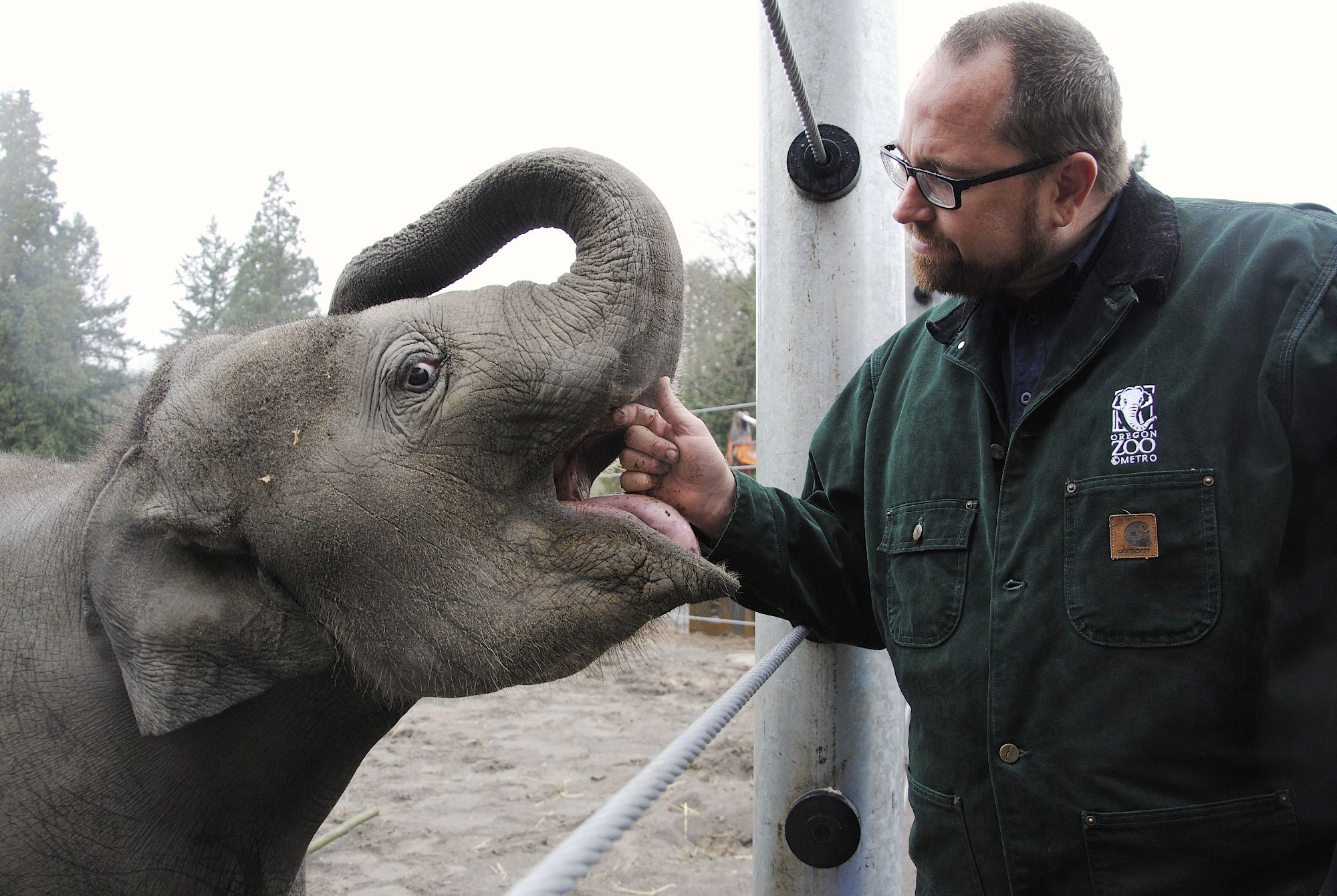Elephant Lands
The $57 million elephant habitat at the Oregon Zoo will feature:
o 130,000-gallon pool.
o Forest Hall indoor area featuring natural ground cover.
o Feeding stations.
o Water cannon for bathing and play.
o An “Enrichment Tree” for elephants to search for hidden food and toys.
o Varied terrain to encourage exercise and grazing.
PORTLAND — Not all sand is created equal. Just ask Lily, the Oregon Zoo’s youngest elephant.
On a recent morning, the 1-year-old Asian elephant, all 1,400 pounds of her, dug her feet into the smooth grit as she poked around in the rain for tree limbs, bamboo and other food.
Children, even pachyderms, love a sandbox. And this one, a just-completed chunk of the new $57 million Elephant Lands exhibit, is elephant-sized.
Elephant Lands
The $57 million elephant habitat at the Oregon Zoo will feature:
o 130,000-gallon pool.
o Forest Hall indoor area featuring natural ground cover.
o Feeding stations.
o Water cannon for bathing and play.
o An "Enrichment Tree" for elephants to search for hidden food and toys.
o Varied terrain to encourage exercise and grazing.
The special sand that covers the new outdoor Encounter Habitat, on the south end of what will be Elephant Lands, was found after a year of testing to find the right mix of cushion and porosity.
The deciding factor came from the elephant pack, said Bob Lee, the zoo’s elephant curator. The elephants were given chances to try different sands before the zoo picked what project engineer Wayne Starkey dubbed their “Goldilocks,” the kind that was just right.
And where did the just-right sand come from? It was dredged from the Columbia River by CalPortland’s aggregate plant in Vancouver.
The sediment in the elephant exhibit — which will use 15,000 cubic yards of sand at 4 feet deep — is the same kind used on golf courses, known as USGA topdressing. It’s not as coarse as other sands and drains exceptionally well.
Starkey visited the Vancouver sand facility in the fall and took a look at available varieties. He found that finer masonry sand held more water than was acceptable. A rougher sand drained well, but when it was tested with the elephants, it didn’t seem to draw them in the way the USGA topdressing did. During a trial period, he said, a mound of the USGA topdressing got more attention from the elephants; Lily and her big brother Samudra even used it to play king of the hill.
“It’s really about letting the elephants make decisions for themselves,” Lee said.
Lee said he and the Portland zoo went to such efforts to design the best possible habitat, even sending staff to Ireland’s Dublin Zoo to find inspiration, because, after 15 years of caring for these elephants, the health of the herd is of prime importance to him.
“They are like family,” he said.
Better for elephants
Elephants weigh thousands of pounds, so their relatively small feet need cushioning to ensure they stay healthy and comfortable.
In the wild, Asian elephants roam freely over all sorts of terrain. But when elephants became popular zoo attractions in North America, spurred in part by the celebrated 1962 birth of the Oregon Zoo herd’s patriarch Packy, many zoos housed the giant animals in yards and barns covered with concrete. The concrete is easy to clean but can cause problems such as arthritis and degenerative bone ailments.
The Oregon Zoo last updated the elephants’ home at the turn of the century by adding rubberized flooring indoors to replace the concrete that had been there for decades.
“Rubber is better than concrete,” Lee said. “But we thought, ‘What can we do that’s better than that?'”
Elephant Lands will quadruple the Asian elephant’s habitat by next year, from 1.5 acres to about 6. Gone is the 20-year-old Elephant Museum, the round building that featured a mastadon skeleton. Zoo spokesman Hova Najarian said many of the items in the museum will be placed in the new exhibit.
Money for the expansion came from a $125 million bond passed by Portland Metro voters in 2008. Also planned to debut in the next few years is the three-story Condors of the Columbia aviary, a 30,000-square-foot Zoo Education Center and new habitats for polar bears, primates and rhinos. You can find a rundown at www.oregonzoo.org/discover/new-zoo.
Though zoo staff are happy the Elephant Lands project is finally coming to fruition after years of planning, Lee said it’s the enthusiastic reaction from the animals that gives him the most joy.
“To watch the elephants run around and enjoy it has been the biggest reward of all,” Lee said.



